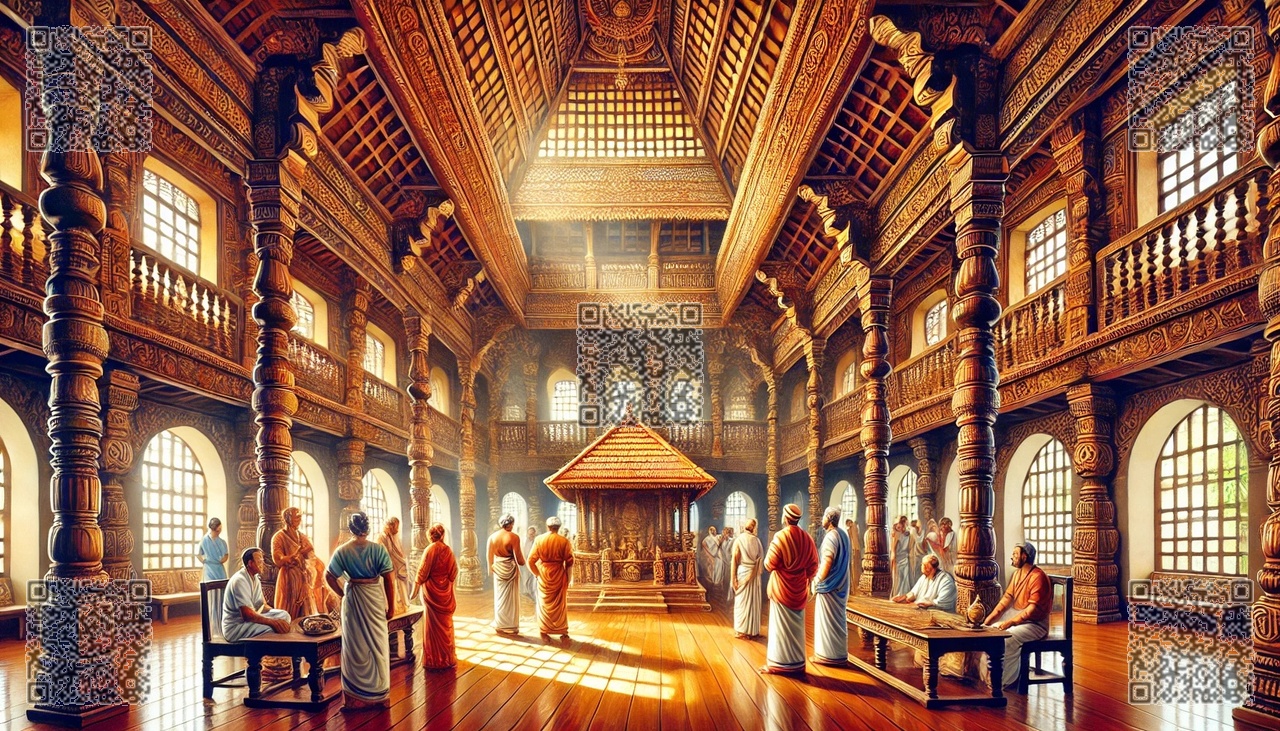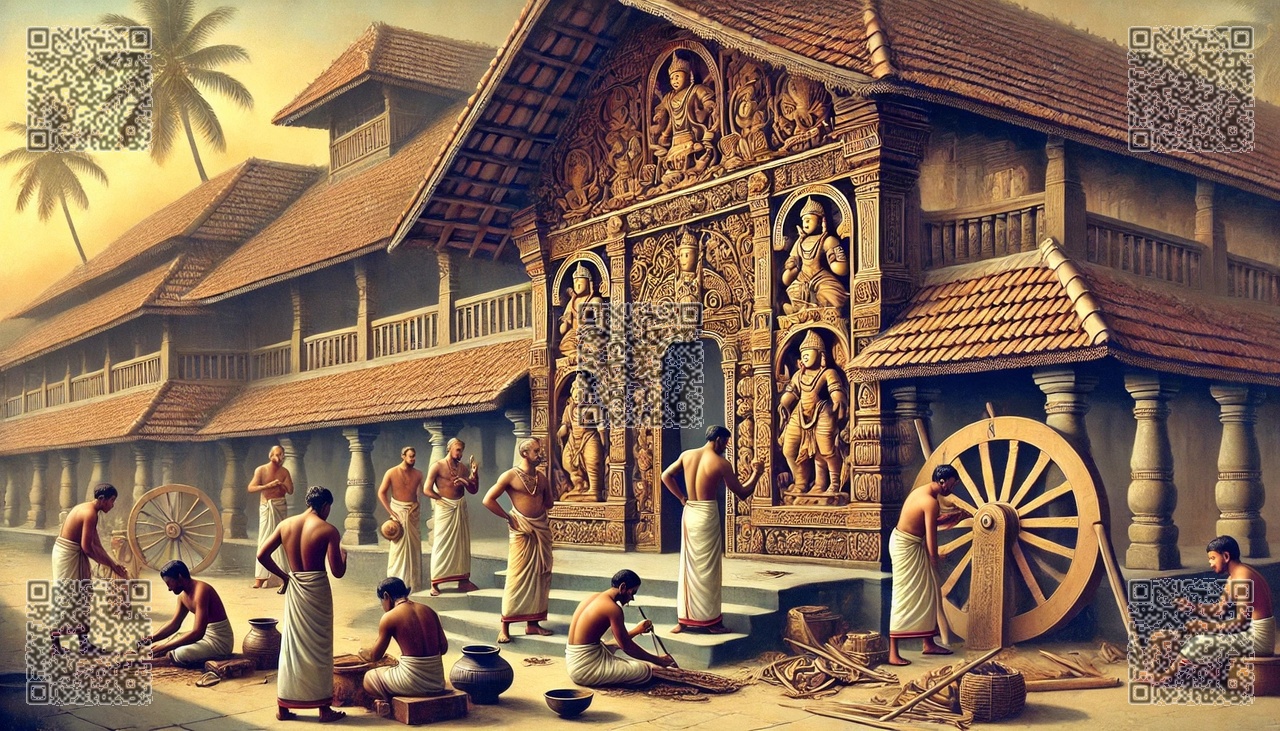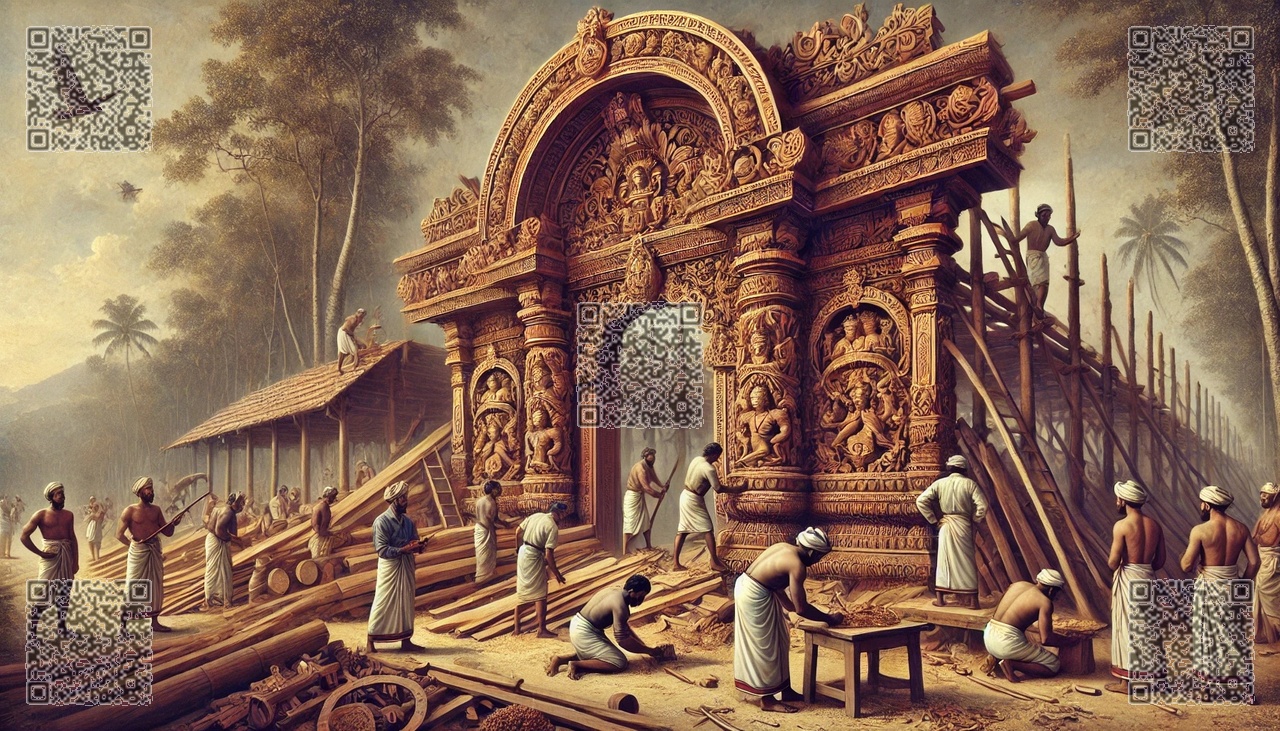
The Alummoottil family, a historic lineage in Kerala, is renowned not only for its rich history and matrilineal traditions but also for its exceptional contributions to cultural and architectural heritage. The estates of the Alummoottil family, particularly the Nalukettu (traditional ancestral home), stand as enduring symbols of intricate craftsmanship and a deep appreciation for the arts.

The Nalukettu: A Centerpiece of Cultural Legacy

The Alummoottil Nalukettu, a sprawling four-winged structure, is a quintessential example of traditional Kerala architecture. Designed to accommodate the extended family and serve as a hub for religious and communal activities, the Nalukettu reflects both functional and aesthetic priorities. The structure’s central courtyard, surrounded by spacious rooms and granaries, exemplifies the harmony between practicality and elegance.
During the tenure of Kuthakkakkaran Sekharan Channar as Karanavar (chief), the Nalukettu underwent significant enhancements. Notably, he had the entire structure roofed with tiles, an innovation at the time, to protect it from fire and natural elements. This initiative not only preserved the ancestral home but also demonstrated the family’s commitment to safeguarding their heritage.
Woodwork and Artistic Flourishes
One of the most striking features of the Alummoottil estates is the intricate woodwork that adorns the Nalukettu and other family buildings. Sekharan Channar, with his deep appreciation for art, commissioned skilled artisans to create intricately carved wooden pillars, cots, and furniture. The east side of the Nalukettu, in particular, showcases these exquisite details, blending artistic mastery with cultural symbolism.
Among the notable pieces are carved cots, round tables, and almirahs that have survived generations, serving as a testament to the craftsmanship of the era. These artifacts, infused with mythological motifs and traditional designs, reflect the cultural ethos of the time.
Bronze and Metalwork
In addition to woodcraft, the Alummoottil family invested in ornate bronze and metalwork. Large bronze vessels, such as the “varppu” (cooking vessel), were not only functional but also artistic masterpieces. One such vessel, inscribed with “Alummoottil Sekharan Vaka” (Property of Sekharan of Alummoottil), remains a prized artifact, showcasing the family’s emphasis on cultural preservation.
The family also commissioned elaborate hanging lamps and chain lamps for their homes and temples. These artifacts, often used during religious ceremonies, added an aura of sanctity and grandeur to their spaces.
Architectural Innovations
Beyond individual artifacts, the Alummoottil family’s estates were innovative in their architectural designs. The granaries, cattle sheds, and storerooms were meticulously planned to ensure efficiency and durability. Features like well-ventilated storage areas and tiled roofs demonstrated a forward-thinking approach to architecture, blending tradition with practicality.
A Legacy of Art and Culture
The intricate craftsmanship of the Alummoottil estates reflects the family’s deep connection to Kerala’s artistic traditions. Their investment in architecture and art not only enhanced their homes but also contributed to the cultural heritage of the region. Today, the Alummoottil estates stand as enduring monuments to a family that valued artistry, preservation, and cultural pride.
This legacy of craftsmanship continues to inspire admiration, offering a glimpse into a bygone era of elegance and tradition.



